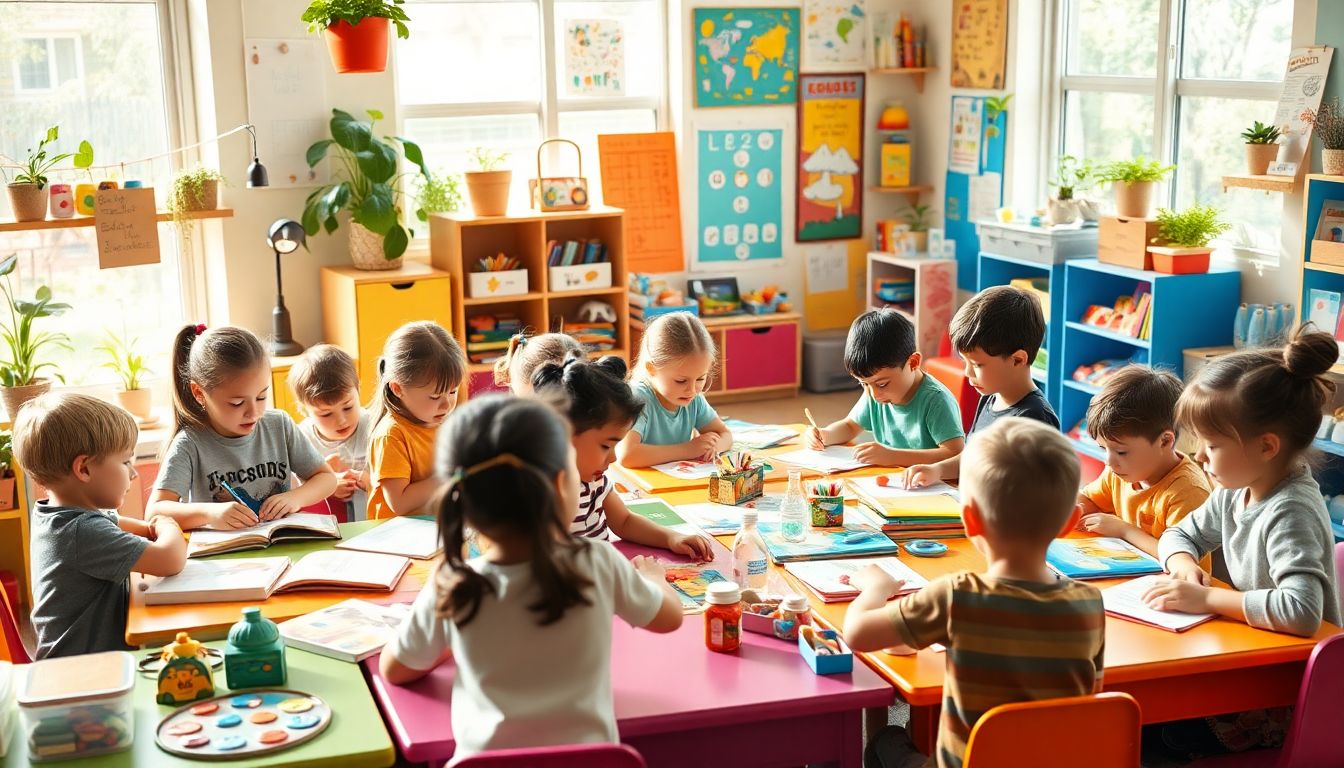
Child-Led Learning: Empowering Children to Discover and Grow
Introduction
Imagine a classroom or home where kids chase what excites them—where their natural curiosity sparks learning. That’s the magic of child-led learning. It’s a way of teaching that puts children in the driver’s seat, letting them explore their interests openly. This approach isn’t new; it’s gaining popularity because it helps kids become confident, creative, and eager learners. Today, we’ll explore what child-led learning really is, why it works, how to use it, and the challenges you might face along the way.
Definition and Key Principles
What is Child-Led Learning?
Child-led learning is an approach where children take the lead in their education. Instead of following a strict plan set by teachers or parents, kids decide what they want to explore. The focus is on their curiosity, giving them control over their learning journey. Key ideas include independence, personalized discovery, and making learning fun.
Historical and Educational Context
This idea isn’t new. Think of educators like Maria Montessori and programs like Reggio Emilia. Montessori believed children learn best when they choose activities that interest them. Reggio Emilia encourages kids to express themselves through projects they select. Both models focus on giving children the freedom to learn at their own pace, contrasting with traditional classrooms that follow rigid schedules.
The Science Behind Child-Led Learning
Research shows children learn more when they are engaged and interested. Studies reveal that hands-on, experiential learning boosts retention and makes lessons more meaningful. When kids control what they learn, they become more motivated and better at problem-solving.
Benefits of Child-Led Learning
Enhances Creativity and Critical Thinking
Kids develop stronger problem-solving skills through self-chosen projects. For example, a child interested in animals might build a model zoo or read about different species. These activities challenge their minds and encourage thinking outside the box.
Promotes Independence and Self-Motivation
When children pick their activities, they gain confidence and feel ownership over their education. This boosts their motivation to learn more. Experts say children who lead their own learning are more likely to develop a love for discovery that lasts a lifetime.
Supports Individual Learning Styles and Paces
Every child learns differently. Some might love reading, others prefer hands-on activities. Child-led learning adapts to these needs by letting each kid explore at their own speed. This personalized approach often results in better understanding and stronger skills.
Improves Emotional and Social Skills
As children choose projects together or share ideas, they learn how to work as a team. Talking through their projects helps them communicate better. Plus, making choices builds emotional control and resilience.
Implementing Child-Led Learning at Home and in Education
Creating an Enabling Environment
Arrange your space so kids can access supplies easily. Use open-ended resources like blocks, art supplies, and books. Remove rigid schedules and let kids follow their rhythm. An inviting space feeds curiosity and makes exploration natural.
Facilitating Children’s Interests
Pay attention to what catches their eye. If a child shows interest in insects, provide related books, videos, or even a small terrarium. Support their questions and ideas as they grow their understanding. The goal: make learning fun and relevant.
Role of Educators and Parents
Instead of telling kids what to do, act as a guide. Ask questions like “What do you want to learn about today?” or “How could you find out more?” Give space for children to explore while offering gentle support when needed.
Incorporating Child-Led Learning in Curriculum
Integrate projects based on their interests into classroom plans. For example, if kids love space, create a mini solar system project. Balance curriculum requirements with the freedom to choose topics. This approach keeps learning engaging and meaningful.
Using Technology and Resources
Use apps and websites that promote exploration, like educational games and science videos. But be careful with screen time—balance tech use with hands-on activities. Digital tools can boost independence if used wisely.
Challenges and Solutions in Child-Led Learning
Common Challenges Faced
Different children learn at different speeds. Some might lose focus if not guided carefully. Balancing freedom and safety can also be tricky. Setting boundaries helps kids stay on track without stifling creativity.
Addressing Parental and Teacher Concerns
Parents and teachers often worry about progress. Show them how children demonstrate learning through projects, conversations, and portfolio work. Share success stories to build confidence in this approach.
Practical Solutions and Tips
Create flexible routines with blocks of time for choice activities. Use assessments that reflect real work, like project exhibitions or presentations. Build a support network of other parents or teachers who believe in child-led methods.
Real-World Examples and Case Studies
Montessori and Reggio Emilia Approaches
Both emphasize children’s natural curiosity. Montessori classrooms have stations where kids choose their activities, fostering independence. Reggio Emilia schools encourage children to document their work and share ideas, promoting self-expression.
Innovative Schools and Programs
Schools like Open Minds Campus in Midrand, South Africa targets allows students to become independent learners, finishing school with the British Curriculum, leading to happier, more engaged learners. https://openmindscampus.co.za/
Home-Based Child-Led Learning
Many homeschooling families thrive using this method. They follow their child’s interests, turning ordinary days into adventures. For example, a parent might let their child take photos of bugs or write stories based on their favorite characters.
Conclusion
Child-led learning unlocks a child’s potential. It helps nurture independence, creativity, and a genuine love for learning. By creating supportive environments and acting as facilitators, parents and teachers can make this approach work. It’s not about abandoning structure but shaping flexible spaces for curiosity to thrive. Start small—observe your child’s interests, ask open questions, and provide resources that inspire their exploration. Together, we can build confident, curious, and capable learners for life.
